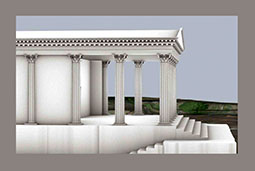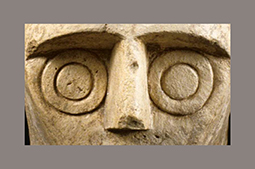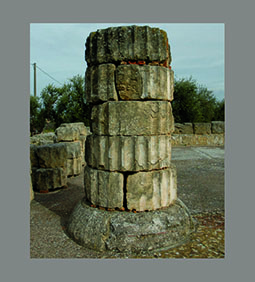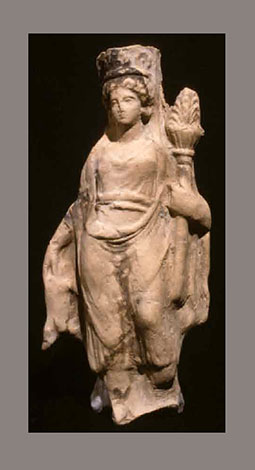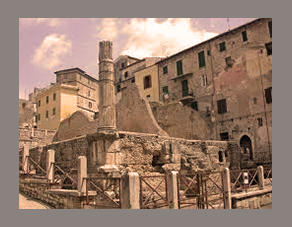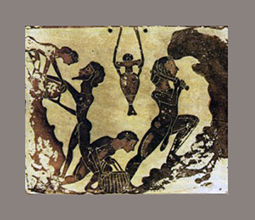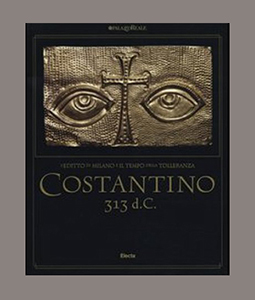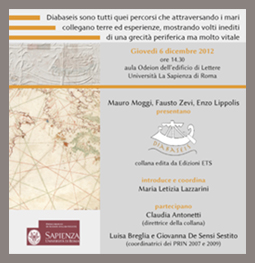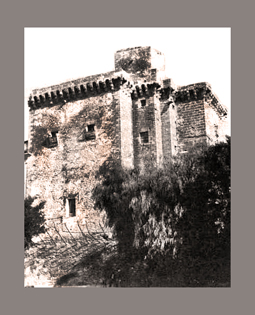 Menfi (Agrigento), Palazzo Pignatelli 30 Novembre 2012 – 11 Marzo 2013
Menfi (Agrigento), Palazzo Pignatelli 30 Novembre 2012 – 11 Marzo 2013
.
Il 30 Novembre alle ore 17.00 nel Palazzo Pignatelli, sarà inaugurata la mostra “Dal Villaggio al Palazzo. Paesaggi storici di Menfi”. La manifestazione è organizzata dalla Soprintendenza ai Beni Culturali e Ambientali di Agrigento, dall’Assessorato ai Beni Culturali ed Identità Siciliana della Regione Sicilia e dal Comune di Menfi. Due sale del piano nobile ospiteranno un’esposizione che costituisce il nucleo dell’instituendo Museo Civico della città, in forza della convenzione tra il Comune di Menfi e l’Assessorato Beni Culturali ed Identità Siciliana. L’iniziativa nasce dall’intento comune della Soprintendenza BB.CC.AA. di Agrigento ed il Comune di Menfi di offrire alla fruizione del vasto pubblico i risultati delle indagini archeologiche condotte negli ultimi venti anni, allo scopo di valorizzare e promuovere un comprensorio dalle notevoli potenzialità innanzitutto paesaggistiche. L’allestimento contempla tre percorsi interrelati, archeologico, monumentale, paesaggistico, che mirano, attraverso le testimonianze di reperti archeologici, documenti d’archivio e cartografia, alla ricostruzione della storia del territorio menfitano. Ciò che arricchisce la mostra di Menfi è che il percorso espositivo, in realtà, inizia dai bassi del Palazzo, dove è possibile visitare gli scavi archeologici, offrendo così l’opportunità singolare ed impagabile di un “museo dentro il museo” ovvero di un “sito archeologico-museo”, in cui la storia del contenitore diventa paradigma della storia della città. L’esposizione segue, quindi, un progetto di “archeologia globale”, mediante l’impiego integrato di una moltitudine di fonti e l’apporto multidisciplinare di metodi e saperi diversi, utili a documentare e decifrare un paesaggio stratificato dall’azione del tempo e dell’uomo. Suoli fertili e posizione strategica hanno determinato le dinamiche del popolamento sin dall’antichità: un territorio compreso tra due fiumi, il Belice ed il Carboj , importanti vie di penetrazione verso l’entroterra, e affacciato sul Mediterraneo, prospiciente la costa africana, dove nei secoli si mossero uomini e merci. La storia di Menfi inizia da un “villaggio”, l’insediamento protostorico di Montagnoli, proprio sul Belice, importante centro indigeno, che presto dovette entrare nell’orbita di Selinunte, polis egemone della Sicilia occidentale, e che ha restituito significative testimonianze di cultura materiale, specie di ceramica a decorazione impressa e di oggetti legati alla vita quotidiana e ai culti. Notevole l’evidenza archeologica relativa al periodo romano, quando il territorio di Menfi, intensivamente occupato, viene sfruttato per le sue potenzialità agricole, come dimostrano gli insediamenti individuati dalle ricognizioni della Soprintendenza e dallo scavo della fattoria di contrada Fiori, da dove provengono reperti e monete di età tardorepubblicana. La storia posteriore di Menfi può essere letta attraverso la ricchissima stratigrafia di Palazzo Pignatelli, dove la Soprintendenza ha condotto indagini archeologiche pochi anni fa, portando in luce una necropoli a fossa foderata da lastre di pietra di età tardo romana, su cui si impianta un insediamento di età altomedievale e medievale, che ha restituito reperti significativi databili tra il X ed il XIII secolo. Tali strutture sono da porre in relazione all’habitatio voluta da Federico II e, probabilmente alla Torre, che esisteva accanto al Palazzo, prima del terremoto del Belice e che oggi si presenta totalmente reinterpretata dal restauro di Gregotti. Sull’insediamento medievale viene eretto il Palazzo Pignatelli, voluto dal Duca Diego Aragona e Tagliavia, insieme alla fondazione di Menfi, nel 1638. I rifacimenti delle pavimentazioni eseguiti nel corso dei secoli raccontano la storia della dimora patrizia, e, nel contempo, mappe e documenti di archivio, ricostruiscono la storia urbanistica della città fino al secolo scorso, mentre la fotografia ritrae il paesaggio attuale ed i segni impressi dall’uomo nel corso dei secoli.
.
Per altre informazioni:
Regione Sicilia, Assessorato BB.CC. e I.S. Dipartimento BB.CC. e I.S.
http://www.regione.sicilia.it/beniculturali
Soprintendenza BB.CC.AA. Agrigento.
sopriag@regione.sicilia.it
Tel. 0922552611
R.P. Valentina Caminneci
URP Adriana Cascino
urpsopriag@regione.sicilia.it.
Tel. 0922552516. Fax 0922401587
 .
.

